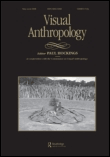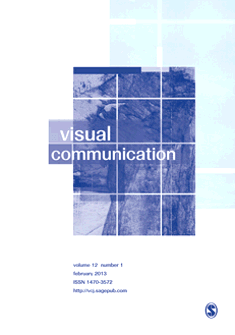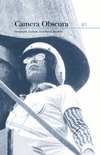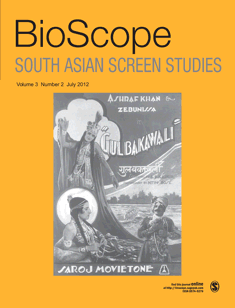
Visual Anthropology
Scope & Guideline
Decoding Society Through Visual Narratives
Introduction
Aims and Scopes
- Visual Ethnography:
The journal emphasizes the use of visual methods in ethnographic research, exploring how imagery can convey complex cultural meanings and social realities. - Cultural Representation:
A core focus is on how different cultures are represented through visual media, examining the power dynamics inherent in these representations. - Interdisciplinary Approaches:
Visual Anthropology encourages interdisciplinary studies, merging insights from anthropology, art history, film studies, and media studies to enrich visual analysis. - Digital and Multimedia Narratives:
The journal explores contemporary digital practices, including social media and digital storytelling, and their impact on cultural expression and ethnographic documentation. - Material Culture:
Research on the material aspects of culture, including photography, craft, and performance, is prevalent, highlighting the relationship between materials and cultural practices.
Trending and Emerging
- Digital Ethnography:
A significant increase in research utilizing digital platforms for ethnographic inquiry is evident, reflecting the growing importance of online cultures and communities. - Activism and Visuality:
There is a rising trend in exploring the intersection of visual culture and social activism, particularly how imagery is used to advocate for social justice and human rights. - Cultural Memory and Trauma:
Themes surrounding visual representations of cultural memory, particularly in contexts of trauma and conflict, are gaining traction, highlighting the role of visuals in collective remembrance. - Intersectionality in Visual Culture:
Emerging studies are increasingly addressing intersectionality within visual narratives, focusing on how various identities (gender, race, class) are represented and experienced visually. - Augmented and Virtual Reality:
Research on augmented and virtual reality as tools for ethnographic exploration is on the rise, pushing the boundaries of how anthropologists engage with and present cultural experiences.
Declining or Waning
- Traditional Ethnographic Film:
There has been a noticeable decline in studies focused exclusively on traditional ethnographic filmmaking, as the field shifts towards more diverse and contemporary visual practices. - Static Visual Analysis:
Research concentrating solely on static images, such as traditional photography, is becoming less frequent, with a growing emphasis on dynamic and interactive visual forms. - Historical Representation:
Themes centered on historical representations and archival studies appear to be waning, possibly as the focus shifts towards contemporary issues and real-time visual cultures. - Single-Country Studies:
There is a decline in papers that focus narrowly on single-country case studies, as researchers increasingly adopt comparative and transnational perspectives. - Textual Analysis of Visual Media:
The approach of analyzing visual media primarily through textual frameworks is decreasing, as more scholars advocate for multimodal and sensory methodologies.
Similar Journals

Culture & History Digital Journal
Exploring the Intersections of Culture and History.Culture & History Digital Journal, published by CONSEJO SUPERIOR INVESTIGACIONES CIENTIFICAS-CSIC, is a distinguished Open Access journal dedicated to advancing the study of cultural phenomena and historical narratives. Recognized for its scholarly contributions, this journal boasts an impressive ranking within the Q2 category of both Cultural Studies and History for 2023, further supplemented by its notable standings in Scopus, where it ranks #533 out of 1760 in Arts and Humanities (History) and #544 out of 1304 in Social Sciences (Cultural Studies), reflecting its commitment to high-quality research dissemination. The journal has been embracing Open Access since 2012, making a wide array of interdisciplinary content freely available to researchers, professionals, and students worldwide. With a focus on promoting innovative scholarship and critical analysis within the digital humanities landscape, Culture & History Digital Journal serves as an essential platform for those engaged in the exploration of the interplay between culture and history in the contemporary context.

Visual Communication
Illuminating the Power of Visual Culture.Visual Communication, published by SAGE Publications Inc, is a leading journal in the fields of Communication and Visual Arts and Performing Arts, recognized for its significant contribution to theoretical advancements and empirical research. With an impressive impact factor and ranked in the Q2 quartile for Communication and Q1 for Visual Arts and Performing Arts, this journal attracts a diverse audience of researchers, professionals, and students dedicated to exploring the multifaceted nature of visual communication. Spanning from 2002 to 2024, the journal publishes high-quality articles that delve into the intricate relationship between visual culture and communication practices. It consistently ranks favorably within Scopus, placing in the 97th percentile for Visual Arts and Performing Arts and the 76th percentile for Communication, making it a vital resource for those seeking to advance their understanding of visual discourse. While the journal is not open access, its subscription model ensures rigorous peer review, thereby maintaining high academic standards. The global reach of Visual Communication solidifies its role as an essential platform for innovative dialogue and scholarship within the academic community.

HISTORY OF PHOTOGRAPHY
Illuminating Perspectives: A Scholarly Journey Through PhotographyHISTORY OF PHOTOGRAPHY is a prestigious scholarly journal published by Taylor & Francis Ltd, focusing on the rich and evolving narrative of photography as an art form and cultural phenomenon. With an ISSN of 0308-7298 and E-ISSN 2150-7295, this journal has established a significant presence since its inception in 1977, with an anticipated run into 2024. Positioned in the Q4 category of the Visual Arts and Performing Arts field, it ranks within the 51st percentile among its peers, affirming its role in the scholarly discourse of photography. Although not an Open Access journal, it maintains accessibility for academics through institutional subscriptions and various library networks. The journal aims to foster interdisciplinary dialogue, encompassing diverse perspectives on the history, theory, and practice of photography, making it an invaluable resource for researchers, professionals, and students alike who are seeking to deepen their understanding of this dynamic medium.

Home Cultures
Advancing Knowledge on Home Life and Its Cultural ImpactHome Cultures is an esteemed academic journal published by Routledge Journals, Taylor & Francis Ltd, specializing in the interdisciplinary fields of Cultural Studies, Visual Arts, and Social Psychology. Since its inception in 2008, this journal has become a vital platform for researchers and practitioners to explore the complexities of domestic spaces and their cultural implications. With an impressive Scopus rank of #108 in Visual Arts and Performing Arts and a commendable Q2 quartile ranking in Cultural Studies, Home Cultures engages with innovative research that challenges conventional narratives within everyday environments. While the journal currently operates on a subscription basis, it offers valuable insight and promotes scholarly dialogue through its rigorously peer-reviewed articles. Positioned within the United Kingdom, Home Cultures continues to contribute significantly to the academic discourse on the interplay between home life and broader cultural phenomena.

CAMERA OBSCURA
Engaging with the Visual: A Gendered ApproachCAMERA OBSCURA, an esteemed journal published by DUKE UNIVERSITY PRESS, serves as a vital platform at the intersection of Visual Arts and Gender Studies. With its ISSN 0270-5346 and E-ISSN 1529-1510, this journal has been an influential contributor to critical discussions in cultural theory and visual culture from 2002 to 2024. Notably categorized in the Q4 quartile for Gender Studies and Q2 for Visual Arts and Performing Arts in 2023, CAMERA OBSCURA boasts a Scopus rank that reflects its growing impact within the academic community. Although currently not offered as an open-access publication, its rigorous peer-reviewed content remains crucial for researchers, professionals, and students alike, facilitating a deeper understanding of how visual representation shapes and is shaped by societal constructs. Set in the heart of the United States, the journal's commitment to exploring the complexities of gendered visuality emphasizes its importance within contemporary scholarship in these vibrant fields.

Bioscope-South Asian Screen Studies
Navigating the Intersection of Culture and CinemaBioscope-South Asian Screen Studies is an influential journal dedicated to advancing the field of screen studies in the South Asian context, published by SAGE Publications India Pvt Ltd. With an ISSN of 0974-9276 and an E-ISSN of 0976-352X, this journal spans a convergence of scholarly research from 2010 to 2024, providing a significant platform for interdisciplinary dialogue. Holding a Q3 rating in Communication and a Q2 rating in Visual Arts and Performing Arts in the 2023 category quartiles, it ranks 212th in its field on Scopus, reflecting its vital contribution to academic discourse. Bioscope aims to explore and critically analyze the rich tapestry of South Asian cinema, media, and performance arts, offering researchers, professionals, and students a valuable resource for deepening their understanding of regional and global cinematic narratives. Readers will find insightful articles that probe the cultural, social, and political dimensions of screen studies, making this journal an essential reference for anyone engaged in the evolving landscape of South Asian visual culture.

Iconographica
Advancing Scholarly Discourse in Visual CultureIconographica is an esteemed journal published by SISMEL EDIZIONI GALLUZZO, dedicated to the exploration of cultural narratives through visual arts and performing arts. Based in Italy, this journal has been providing a platform for scholarly discourse from 2015 to 2023, and it serves as an important resource for researchers, professionals, and students interested in these interdisciplinary fields. Although indexed in the Q4 quartile for both Cultural Studies and Visual Arts, this journal offers valuable insights that encourage the examination and understanding of visual culture. While currently operating without an open access model, its rigorous peer-review process ensures high-quality academic contributions that reflect the evolving dynamics within these areas of study. Set against the backdrop of a rapidly transforming cultural landscape, Iconographica aims to foster engagement, inspire innovative perspectives, and cultivate a deeper appreciation for the interplay between culture and visual representation.

STORIA DELL ARTE
Connecting Past and Present in Art DiscourseSTORIA DELL ARTE is a notable journal dedicated to the rich exploration of art history and its varied facets, published by LUCA EDITORI ARTE ROMA. With an ISSN of 0392-4513, this publication serves as a vital resource for researchers, professionals, and students in the fields of Visual Arts and Performing Arts. Although the journal's coverage in Scopus has been discontinued from 2014, it has been recognized in the Scopus ranking as positioned within the 31st percentile among 374 entries in its category, highlighting its relevance in the realm of arts and humanities. While it does not offer open access, the journal's commitment to enriching the discourse on art history makes it an essential read for anyone interested in visual culture and historical contexts. Based in the heart of Rome, at VIA NOVELLA, 22, ROMA 00199 RM, ITALY, STORIA DELL ARTE continues to inspire scholarly discussion and contribute valuable insights to the academic community.

Quiroga-Revista de Patrimonio Iberoamericano
Fostering Dialogue on the Visual and Performing ArtsQuiroga-Revista de Patrimonio Iberoamericano, published by UNIV GRANADA, is a distinguished open-access journal dedicated to the fields of conservation, museology, and the visual and performing arts. Since its inception in 2012, the journal has provided a platform for scholars and practitioners to disseminate innovative research and critical discussions pertinent to Ibero-American heritage. With a growing impact, evidenced by its category quartiles ranking—Q3 in Conservation and Q2 in both Museology and Visual Arts and Performing Arts—as well as its Scopus rankings, Quiroga serves as an essential resource for researchers, professionals, and students who engage with the complexities of cultural preservation and artistic expression. The journal’s commitment to open access ensures the widespread availability of knowledge, fostering academic dialogue and collaboration within the global community. For inquiries, the journal can be reached at their offices located in Granada, Spain.

Ekphrasis-Images Cinema Theory Media
Illuminating the Intersections of Art and FilmWelcome to Ekphrasis-Images Cinema Theory Media, an academic journal dedicated to exploring the intersections of visual arts, cinema, and media studies. Published by the esteemed BABES-BOLYAI UNIVERSITY, FACULTY OF THEATRE & TELEVISION in Romania, this journal serves as a critical platform for scholars and practitioners to disseminate groundbreaking research and innovative ideas within these vibrant fields. With an ISSN of 2067-631X and an E-ISSN of 2559-2068, Ekphrasis is committed to enhancing the discourse surrounding contemporary visual culture, as evidenced by its Scopus rankings in the arts and humanities categories. Aiming to contribute to academic discussions from 2019 to 2024, it invites submissions that challenge conventional perspectives and promote new methodologies. Although currently positioned in the Q4 category for Communication and Q3 for Visual Arts and Performing Arts, the journal is poised for growth and aims to increase its impact factor through the openness of scholarly exchange and rigorous peer review. Join us in advancing the critical discourse at the crossroads of art and media!